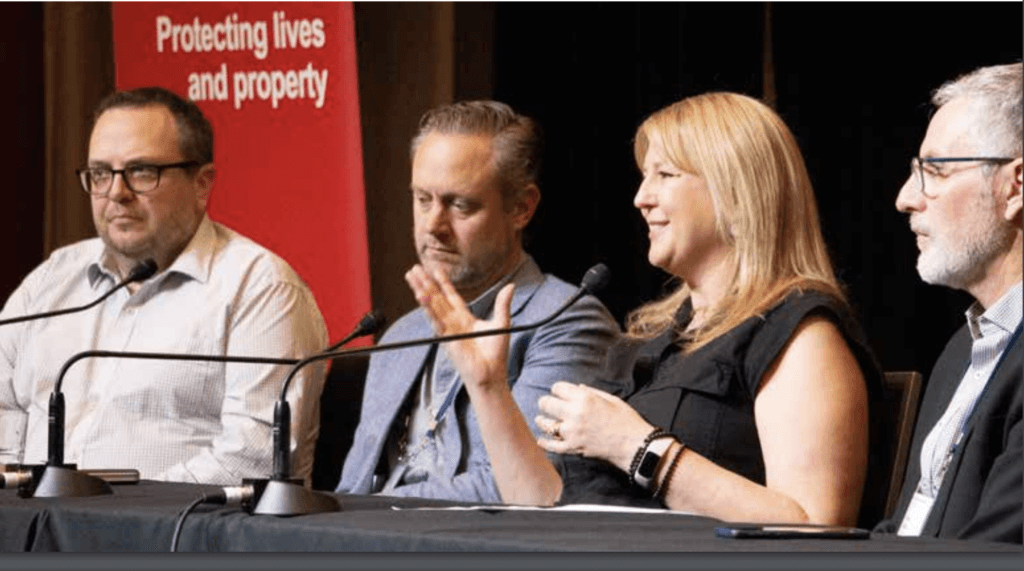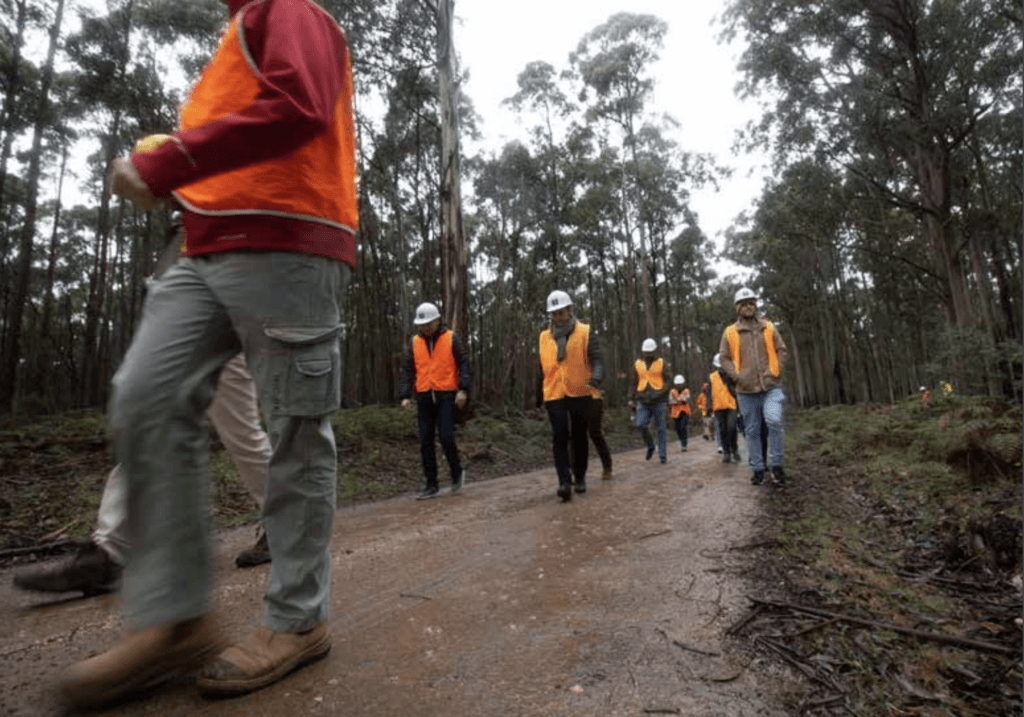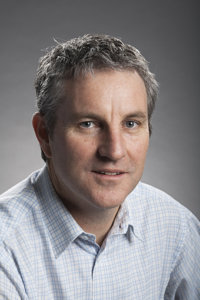A CALL FOR MITIGATION AND PREVENTION
MELBOURNE PRESENTERS AGREE BETTER SUPPRESSION TACTICS ALSO NEEDED
BY DAVID BRUCE
Fire & Climate 2022 concentrated our collective attention on the most significant forces shaping wildland fire today. The conference goal was to better prepare us to focus and respond to the formidable challenges involving our people, our communities, and our landscapes both built and natural.
The conference was built upon the 2022 IAWF Position Paper on Climate Change and Wildland Fire, with its reliance on science and experience to advocate for a commitment to better ways of managing wildland fire under climate change; this included a comprehensive Calls to Action, much of which was addressed by Fire & Climate 2022.
Fire & Climate 2022 was the first International Association of Wildland Fire conference under that title but drew on the traditions of past IAWF conferences on fuels and fire behaviour, human dimensions and the safety summit.
As we collectively face a present and a future impacted by large and destructive bushfires and still under the cloud of a COVID-19 pandemic, the conference presented a timely opportunity to focus on the bigger issues involved in dealing with natural hazards under climate change.
Two weeks apart, the same conference, but with a separate program, was held in Pasadena, California, and then in Melbourne, Australia.
In Melbourne, about 360 people registered for the five-day program that featured nine keynote presenters – all leaders in the science, policy, planning and operations of fire and climate, expert panels on cultural burning in Australia and North America and on fire science communications, plus almost 100 research and practice presentations from subject matter experts.
The conference subtheme, Impacts, Issues and Futures, was an acknowledgment that we need to share information globally about bushfire causes and impacts, how we engage with communities and other stakeholders so that we can act locally to protect our communities and our natural environment, as well as what are we doing to prepare to minimise impacts of climate and fire regime changes.
The scale and impacts of recent bushfires in Australia and elsewhere are reminders of the relevance of innovation and research in the emergency management and bushfire management sectors. The research, case studies and personal reflections on show during conference week demonstrated the significant work and the benefits that will be delivered over coming years, both in Australia and internationally.
In Melbourne, the conference program was structured around the subthemes, with each day building on the insights of the last.

IMPACTS
The conference began with Sophie Lewis, the Australian Capital Territory commissioner for sustainability and the environment and a lead author on the Intergovernmental Panel on Climate Change’s 6th Assessment Report. Lewis looked at what exactly a one-degree rise in temperature means for Australia. While one degree may not seem significant, Lewis used the 2019-2020 Black Summer fires as a baseline to demonstrate just how catastrophic it actually is. Even under our most ambitious attempts to limit warming by one to two degrees in coming years, Lewis said we need to plan for a future with conditions that regularly will make more Black Summer type events likely. And it is not just about the temperature extremes, the impacts will come from compound events.
“Black Summer wasn’t just one extreme event,” Lewis said. “We had heatwaves, extreme smoke and then extreme rainfall falling on burnt areas while other areas were experiencing fires. We don’t really understand what this kind of future will look like. What are the new challenges of compound events? How does it stress people, infrastructure, and the environment?”
Greg Mullins, climate councillor and former commissioner of fire and rescue New South Wales continued with the theme of Black Summer being a case study in what we know today to be a really bad scenario. “But fires the same as or worse than Black Summer are inevitable,” Mullins said. “As each event unfolds, we assume that things can’t get any worse but just ask the Californians – they can. I shudder to think what a bad summer will look like during an El Nino in 2050.”
As we move into a predictable shift to increasingly worsening conditions, our knowledge, preparations, resources and political discussions need to keep pace, Mullins said.
“What now needs to be understood is that history and personal experience are no longer reliable indicators of the future, and that gap needs to be filled with high-quality research and reliable data.”
Amber Soja, research fellow at the National Institute of Aerospace in the United States and an IAWF board member, introduced a global view of where fires are burning and the impacts on both air and land.
Shifting the audience gaze away from Australia, Soja noted that most of the carbon on the planet is stored in the boreal and arctic ecosystems; this is where climate is warming the most right now and is predicted to in future – and that’s where wildland fire has suddenly become a real problem.
“The earliest and largest fire season in the Arctic was in 2020,” Soja said. “This ecosystem influences the entire global climate. This area is huge. The fires keep burning in the same place. So, we know it’s accessing permafrost and releasing millennia of stored carbon.”
ISSUE
Amy Christianson, an IAWF board member, took us on a visually mesmerising walk-through fire in her country. Without needing her to state it, the parallels with Australia were obvious – fire prevention policies of past decades have reduced the use of Indigenous fire to the detriment of the landscape and the people on it, but in parts, this was starting to change for the better.
Michael-Shawn Fletcher, associate professor from the University of Melbourne, followed with a geographer’s explanation on how neglect of country was linked to the more recent rise of large fires in Australia. Using long-term fire history in Australia as a reference, Fletcher showed that there is really no such thing as wilderness – our land has long been shaped and curated by people for their benefit and purpose.
Oliver Costello from Firesticks outlined the research work underway to learn better from country and how this should be continued by supporting those with traditional knowledge and encouraging new researchers into the field.
“What really makes a difference is when we actually lead on country,” Costello said. “When we have Indigenous leaders who know that country, stepping forward and walking forward to show that country.”
Sidney Dekker of Griffith University reckons that we might have it all the wrong way about when we try to make our world safe from the impacts of fire and other hazards. We look too much at what went wrong, the mistakes, and the failures in a misguided attempt to work out how to do the right thing. “Instead of seeing safety as an absence of negatives, let’s see it as the presence of positive factors that go well under complex conditions,” Dekker said.
As chair of a panel of communicators I asked the question: How do you communicate the complexity of fire and climate science? A similar panel session was held in Pasadena.
Stephen Oliver, the Australian Broadcasting Corporation manager of documentaries, showed clips of a range of informative programs on the matter to demonstrate how vibrant, punchy, emotive visuals were the best way of getting the message across. Yes, we are in the entertainment business, he said, but our aim is to engage people so that they change their behaviours.
Ailie Gallant of Monash University’s Climate Change Communication Research Hub suggested that, depending on who you are wanting to talk to, other methods could be more effective in getting that engagement, especially for those who are dismissive or deny climate change.
“There’s no silver bullet when communicating,” Gallant said. “This is why the emotive stories work in some instances, the real connection absolutely works. But there’s always a section of community who aren’t grabbed by these.”

FUTURES
In the final session, leaders in a cross-section of fire-based organisations were left to draw together the lessons of the previous days and tackle the question: What will you need within your agency and externally to get ready for future challenges under climate change?
Rob Rogers, New South Wales rural fire service commissioner, said the 2019-2020 Black Summer fires and the changing climate showed that we all need to urgently rethink what was possible for our future.
“We’ve prepared our people for the historic worst-case scenarios but this has now moved,” Rogers said. “We need to keep adapting this worst case for what’s coming in the future. We can’t leave it another 50 years before we look at this again.”
Ruth Ryan, corporate fire manager at HVP Plantations, spoke about the compounding consequences for resources, both human and natural.
“There’s another aspect we need to look at – people are getting worn out going from fire to flood to fire – I think we need a rethink and I think it comes back to good land management. It’s got to be about building greater resilience in the land as well as our people.”
The panel members agreed that improvements in fire suppression are needed, however the biggest benefits will be realised by increasing mitigation and prevention. Panellists also agreed that the workforce is the most important component and more needs to be done to attract and retain people as well as prepare them psychologically for what they will experience in their jobs.
On a final note, the good attendance at the conference venue was backed by solid support from a diverse range of sector organisations. Joining us as partners in Melbourne were Natural Hazards Research Australia, Australasian Fire and Emergency Service Authorities Council, Bureau of Meteorology, CSIRO and Melbourne Convention Bureau. Sector partners included Victoria’s Country Fire Authority and Department of Environment, Land, Water and Planning, NSW Rural Fire Service, NSW National Parks & Wildlife Service, the National Recovery and Resilience Agency, Minderoo Foundation and Eco Logical Australia and internationals NASA, US Forest Service, US DOI Office of Wildland Fire, Association for Fire Ecology, and Pau Costa Foundation. Others supported the conference with booths in the sold-out exhibit hall.
ABOUT THE AUTHOR

David Bruce was the co-chair of the Fire & Climate 2022 conference steering committee in Melbourne, Australia. He is a past board member of the IAWF and is currently on the IAWF communications committee. He is the communications director at Natural Hazards Research Australia.
